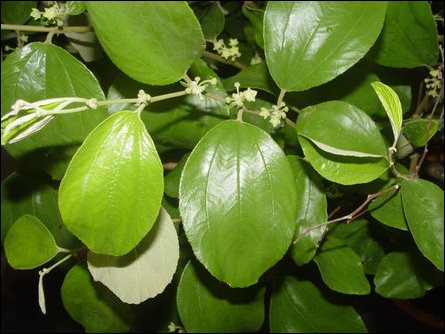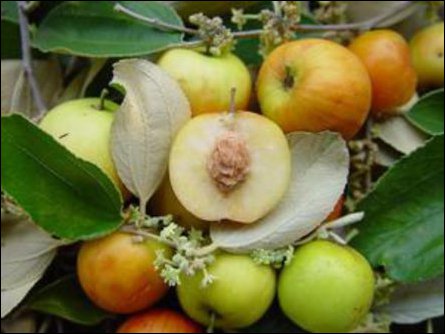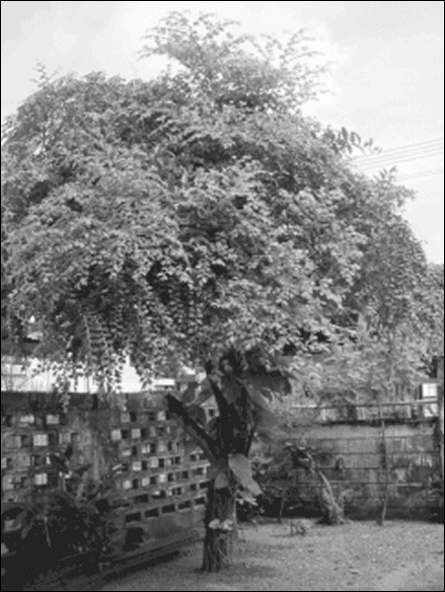Know the Etymology: 34
Place Name of the Day: Saturday, 27 May 2017
Ilantaic-cōlai, Kōṇṭā-vil, Debara-vẹva, Masaň-gas-vīdiya, Nari-ilantaik-kuḷam
இலந்தைச்சோலை,
கோண்டாவில்,
தெ₃ப₃ரவெ[æ]வ,
மஸங்க₃ஸ்வீதி₃ய,
நரியிலந்தைக்குளம்
Ilantaic-cōlai, Kōṇṭā-vil, Debara-vẹva, Masaň-gas-vīdiya, Nari-ilantaik-kuḷamIlantai+cōlai
Kōṇṭā+vil
Debara+vẹva
Masaň+gas+vīdiya
Nari+ilantai+kuḷam
The grove of Zizyphus jujuba trees
The pond of Zizyphus jujuba trees
The tank of Zizyphus jujuba trees or the tank of hornets
The road of Zizyphus jujuba trees, or the road of the Zizyphus jujuba tree
The pond or tank of Nari-ilantai (a variety of Zizyphus jujuba) trees
| Ilantai | a thorny shrub or small tree, stone apple, Zizyphus jujuba (Tamil, DED 475, Tivākaram, 4: 60); Ilanda: Zizyphus jujuba, "Masangas" (Sinhala, Clough, Sorata); Iratti: = Ilantai, Zizyphus jujuba (Tamil, Caṅkam diction, Naṟṟiṇai, 113: 1-2, DED 475); = Iṟali: Zizyphus jujuba (Tamil, Piṅkalam, 2673); Era: Zizyphus jujuba (Kannada, DED 475); Era-miṇiya, Era-miniyā: a thorny shrub of Zizyphus family that bears edible fruits of the size of black pepper corns, Zizyphus napeca (Sinhala, Clough; also Kāsumāriya: Sinhala, Sorata; Cūrai in Tamil) |
| Nariyilantai | Nari+ilantai: a kind of Jujube (Tamil, MTL citing Winslow); probably from the dun colour or inferior quality; Nari-niṟam: multicolour (Tamil, MTL, citing Jaffna Dictionary); some species of plants have the prefix Nari in Tamil as in Nari-viḷā, Nari-veṅkāyam, Nari-veḷḷari, Nari-vāḻai, Nari-nāval, Narip-payaṟu, Nari-murukku, Narip-pākal etc. (Tamil, MTL) |
| Kōṇṭai | also Koṇṭai: Jujube tree (Tamil, DED 2070, Piṅkalam 10: 404; 9: 62); Koṭṭai-ilantai: woody-fruited jujube, Zizyphus xylopyrus (Tamil, DED 2070); Koṭṭai: seed, kernel of fruit (Tamil, DED 2069); Końḍa: fruit (Sinhala, Clough); "Geḍiya" (Sinhala, Sorata) |
| Debara1 | also Ḍebara: Zizyphus jujuba (Sinhala, Clough); metathesis transposition from Badara: Zizyphus jujuba (Sanskrit, CDIAL 9125); Vatari: Zizyphus jujuba (Tamil, Tivākaram, 4: 60) |
| Debara2 | probably shortened from Debarā (singular), Debaru: (plural) a large species of the wasp or hornet, Spex ferruginea (Sinhala, Clough); Debaraya: nest of the hornet (Sinhala, Clough); Ḍebarā: = Debarā: wasp, bee (Sinhala, Clough);Dumbhārō: species of very long hornet (Kurux, DED 3328); Tumbṟare: black wasp (Maltese, DED 3328; Tumbṟa: tube, tunnel, DED 3389, see Tumpi in Tamil);Tumberi: bee (Konda, Sova dialect, DED 3328); Ḍummi:a kind of bee (Kannada, DED 3328); Dumbā: wasp, hornet (Kurux, DED 3328); related to Tumpi: bee, dragon fly (Tamil, DED 3328, Kuṟuntokai, 2: 1; etymology is related to Tūmpu: the tubular sting of a wasp, bee etc., or the tubular sucker of a bee, dragon fly etc) |
| Masan | "Debaragasa", Zizyphus jujuba (Sinhala, Sorata); Probably from, Mas: small stone, pebble (Sinhala); Masu: gem (Sinhala) |
Ilantai is the common Tamil/ Dravidian term (DED 475) for the thorny shrub or small tree called stone apple (Zizyphus jujuba). A cognate Ilanda could be found in Sinhala too (Sorata).
Iratti is the old Tamil form of Ilantai (R/ L interchange), as it is by the former term the tree is noted in Caṅkam literature (Naṟṟiṇai, 113: 1-2). The form Ilantai is first noticed in Tivākaram lexicon.
Iratti is closer to the Kannada word Era for Zizyphus jujuba (DED 475), and to the Sinhala name Era-miniyā for a related species, Zizyphus napeca or Zizyphus oenoplia.
* * *Iratti as old form of Ilantai:“புல் அரை இரத்திப் பொதிப் புறப் பசுங் காய்” (நற்றிணை, 113: 1-2)
“Pul arai irattip potip puṟap pacuṅ kāy” (Naṟṟiṇai, 113: 1-2)
The fresh and fleshy fruits of the thin-stemmed Iratti
“இரத்தி வதரி இலந்தை ஆகும்” (திவாகரம், 4: 60)
“Iratti vatari ilantai ākum” (Tivākaram, 4: 60)
“Iratti and Vatari mean Ilantai”
* * *Koṇṭai and Kōṇṭai are alternative Tamil/ Dravidian terms (DED 2070) for the Jujube tree and they are noticed in a few Eezham Tamil place names. The terms are probably related to Koṭṭai-ilantai (nasalized in Koṇṭai), a Tamil term for a kind of Ilantai, Zizyphus xylopyrus. Note Koṇḍa in Sinhala meaning fruit or kernel of fruit (Geḍiya)
Also note that the Sinhala name Masan for Zizyphus jujuba means the same as Koṭṭai.
The Sinhala term Masan in Masan-gas seems to be related to the root Mas, which in Sinhala means a small stone or pebble. Gem is one of the meanings for the Sinhala word Masu.
* * *Koṇṭai, Kōṇṭai meaning Ilantai: “இலந்தைக் கனி மயிர் முடி இவை கொண்டை” (பிங்கலம், 10: 404)
“Ilantaik kaṉi mayir muṭi ivai koṇṭai” (Piṅkalam, 10: 404)
The fruit of Ilantai and hair knot are called Koṇṭai
“குல்லரி …இலந்தை ஆகும் அதன் பழம் கோலமும் கோண்டையும் ஆகும்” (பிங்கலம், 9: 62; 63)
“Kullari …ilantai ākum ataṉ paḻam kōlamum kōṇṭaiyum ākum” (Piṅkalam, 9: 62; 63)
Kullari etc., mean Ilantai; the fruit of it is called Kōlam and Kōṇṭai
* * *Debara (written both with dental and palatal D) or Maha-debara is another common Sinhala term for Zizyphus jujuba.
Debara in this shade of meaning is metathesis (transposition) form of Badara in Sanskrit, meaning the same tree (CDIAL 9125). A related Tamil form Vatari could be found noted in the earliest Tamil lexicon Thivākaram (4: 60).
* * *The usage of Debara in Sinhala place names, other than meaning Zizyphus jujuba, could also be related to Debarā/ Debaru meaning a kind of large wasp or hornet, and Debaraya meaning the nest of it in Sinhala.
This kind of poisonous hornets and their huge nests hanging on trees are much feared. The nests are often burnt and destroyed when they are found near settlements. The presence of the hornet or its nest sometimes gives identity to a locality (note the Tamil place name example Kuḷavi-cuṭṭāṉ).
Debarā in the meaning of wasp or hornet in Sinhala finds its closest parallel in the Kurux word Dumbhārō, meaning a species of hornet that is very long. The Kurux word is listed as Dravidian, related to Tumpi in Tamil (DED 3328). Kurux is a Dravidian tribal language spoken in Orissa, Central India and parts of Eastern India.
See other columns for Cōlai, Vil, Vẹva, Gas and Vīdiya, respectively meaning a grove/ forest, pond, tank, tree and road.
* * *Ilantaic-cōlai is a place in Kayts division of Jaffna district.
Kōṇṭā-vil is a village in Nalloor division of Jaffna district. Where a pond formerly existed at this place was until recently found with thickets of jujube trees. There are other places having the name Kōṇṭā-vil near Teṉṉiyaṅ-kuḷam in Kilinochchi district (Thunukkai OIS) and near Iyakkacci in Pachchilaippalli of Kilinochchi district (Elephant Pass OIS)
Debara-vẹva is in Thissamaharama division of Hambantota district.
Masan-gas-vīdiya is a place in Colombo division of Colombo district.
Nariyilantaik-kuḷam is located southeast of Kaṭṭaippaṟiccāṉ in Moothoor division of Trincomalee district (Trincomalee OIS)
* * *Some related place names:Ilantai:Ilantai-mōṭṭai-veḷi: Musali, Mannar
Ilantai-mōṭṭaik-kuḷam: Musali, Mannar
Ilantaik-kuḷam: Musali, Mannar; Nanaddan, Mannar
Ilantai-vāṉ: Mantai West, Mannaar. Vāṉ: spill canal
* * *Ilanda (Sinhala):Ilanda-gaha-vẹva: Nuwaragam Palatha, Anuradhapura
* * *Debara:Debara-āra: Wellawaya, Moneragala. Āra: river, stream (Sinhala); Āṟu: river (Tamil)
Debarẹlla: Debara+ẹlla: Lankapura, Polonnaruwa.
* * *Vatari (Tamil):Vatira-veṭṭai: Eravurpattu, Batticaloa
Vātara-vattai: Puttur, Jaffna
* * *
Ziziphus jujuba: foliage

Ziziphus jujuba: berries [courtesy: caribfruits.cirad.fr]

A Ziziphus jujuba (indica) tree
Previous columns:









